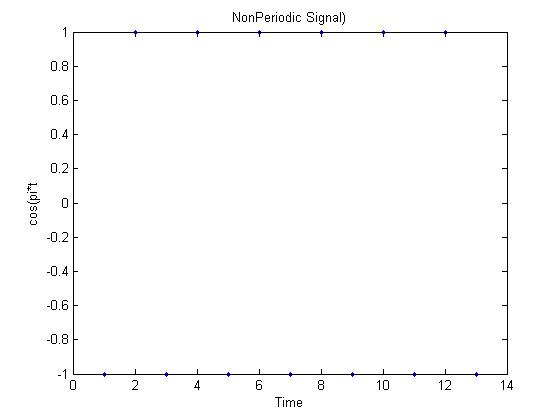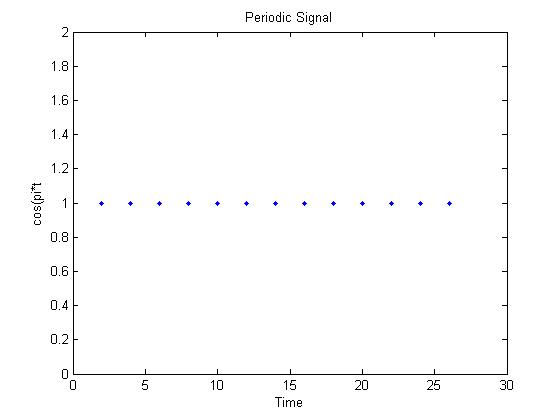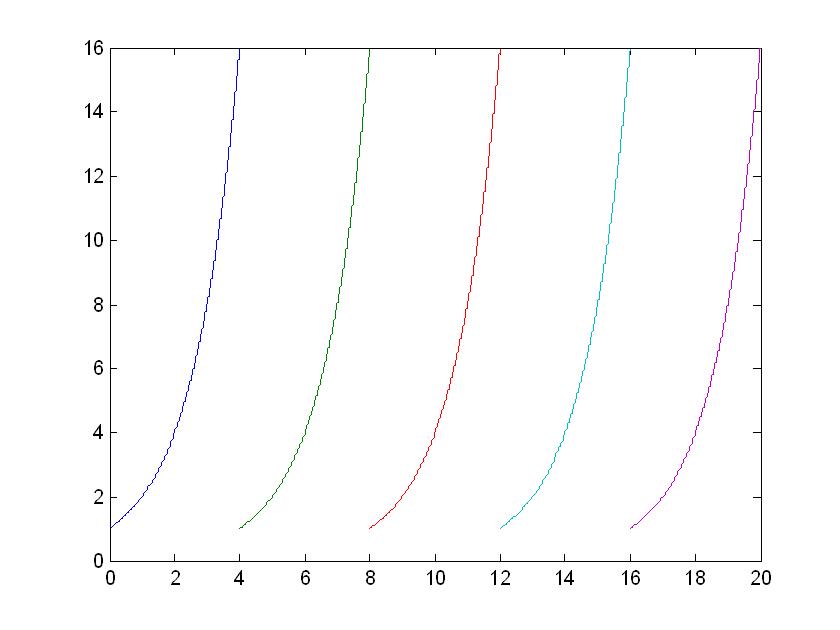(→Part 1) |
(→Part 1) |
||
| Line 1: | Line 1: | ||
== Part 1 == | == Part 1 == | ||
<pre> | <pre> | ||
| − | Given the Signal </pre><math>y=cos(pi*t)</math><pre> | + | Given the Signal </pre><math>y=cos(pi*t)</math><pre> One can make 2 DT Signals one that is periodic and one that is nonperiodic. |
Lets say the Sampling rate is 1. Then the Signal is non periodic as seen in the diagram below. | Lets say the Sampling rate is 1. Then the Signal is non periodic as seen in the diagram below. | ||
</pre> | </pre> | ||
Revision as of 18:11, 10 September 2008
Contents
Part 1
Given the Signal$ y=cos(pi*t) $
One can make 2 DT Signals one that is periodic and one that is nonperiodic.Lets say the Sampling rate is 1. Then the Signal is non periodic as seen in the diagram below.
If the sampling frequency is 2 then the Signal is periodic as seen below.
MATLAB CODE
t=[1 2 3 4 5 6 7 8 9 10 11 12 13]
y=cos(pi.*t)
figure(1)
plot(t,y,'.')
xlabel('Time')
ylabel('cos(pi*t)')
title('NonPeriodic Signal)')
t=t.*(2)
y=cos(pi.*t)
figure(2)
plot(t,y,'.')
xlabel('Time')
ylabel('cos(pi*t')
title('NonPeriodic Signal)')
Part 2
The non Periodic CT Signal is 2^t I made this periodic my shift 2^t from 0 to 4 several times as seen in the picture below
MATLAB CODE
t=0:.001:4; y=2.^t; plot(t,y,t+4,y,t+8,y,t+12,y,t+16,y)




